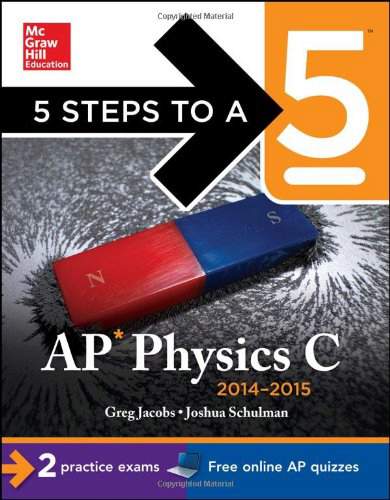Connecting...

This is a quick preview of the lesson. For full access, please Log In or Sign up.
For more information, please see full course syllabus of AP Physics C: Electricity & Magnetism
For more information, please see full course syllabus of AP Physics C: Electricity & Magnetism
AP Physics C: Electricity & Magnetism Gauss's Law
Lecture Description
Gauss’s Law deals with electric flux: an idea of ‘how much’ of an electric field penetrates a miniscule area. You can take any surface and break it up into infinitely small pieces, and call the vector pointing perpendicularly outward from each area dA. The electric field is then the integral of all these tiny areas multiplied by the strength of the field, which will equate to the charge of the surface divided by the permittivity constant always by way of Gauss’s Law. In the video you’ll learn how to use Gauss’s Law correctly; be sure to fully understand the method before moving on. Gauss’s Law will simplify E&M immensely, and will allow you to do problems much quicker.
Bookmark & Share
Embed
Share this knowledge with your friends!
Copy & Paste this embed code into your website’s HTML
Please ensure that your website editor is in text mode when you paste the code.(In Wordpress, the mode button is on the top right corner.)
×
- - Allow users to view the embedded video in full-size.
Next Lecture
Previous Lecture














































1 answer
Fri Feb 16, 2018 5:53 PM
Post by Kevin Fleming on February 16, 2018
Professor Fullerton,
For example 5, question a, part ii, why did you equate the Q(enclosed) by the gaussian surface surrounding the outer radius of the metallic sphere to be +Q if, in part i, you said that the Q(enclosed) for the gaussian surface situated between the inner and outer surface was eqaual to 0. Wouldn't the +Q charge be neutralized by the -Q charge of the inner surface? Thanks
2 answers
Last reply by: Sunanda Eluri
Tue Sep 13, 2016 9:56 AM
Post by Sunanda Eluri on September 13, 2016
Hello sir,
If the radius of the gaussian surface is doubled, will it affect the flux passing through the surface?
1 answer
Sat Sep 3, 2016 3:58 PM
Post by isaac maingi on September 3, 2016
when moving the 4pir^2 from the left side of the equation to the right side of the equation to solve for E, whey does the 4pir^2 go to the denominator instead of the numerator?
4 answers
Mon Feb 22, 2016 6:17 AM
Post by Jim Tang on February 20, 2016
Hm... Same thing
In Example 4, my intuition told me the caps were 0 since dA and E were at 90 degrees...I think that's what you meant by "cancelling out."
In this case, it's not cancelling out between objects...but of simply cancelling out?
2 answers
Last reply by: Jim Tang
Sat Feb 20, 2016 9:02 PM
Post by Jim Tang on February 20, 2016
For Example 2, I think you have the wrong explanation for why the sides cancel out? My intuition tells me since cos(90)=0, the E will all be 0 along those sides. I can't see anything "cancelling out."
1 answer
Thu Feb 18, 2016 10:32 AM
Post by Daniel Jansson on February 18, 2016
Mr. Fullerton, I'd love some examples of Gauss law in differential form as well!
/Danny (Engineering physics student)
1 answer
Sun Apr 19, 2015 3:02 PM
Post by Patrick Jin on April 19, 2015
Hi! Thank you for the lecture first of all.
I have questions about the example 2. So when we use the cylinder shaped gaussian field for the infinite field, all the electric flux to the side cancel out.
Would it be correct if I say that up and down flux cancels out too just like the flux on the side, but since we are dealing with an infinite plane ( which technically only has top and bottom part with no left and right sides ) we are only considering the magnitude of the up and down flux ?
1 answer
Last reply by: Miras Karazhigitov
Sun Apr 5, 2015 7:52 PM
Post by Miras Karazhigitov on April 5, 2015
Hello, can you explain why in 5th example (1. a) ii ) the total charge is equal to +Q?
1 answer
Fri Apr 3, 2015 8:48 AM
Post by Luvivia Chang on April 2, 2015
hello professor, Can you explain why the flux through top and bottom are equal in the example 1 while the sum of the fluxes through left and right caps are zero in example 3? what is the diffeence between the 2 situations?
1 answer
Tue Feb 3, 2015 6:08 AM
Post by Arjun Srivatsa on February 3, 2015
Why does the electric flux of the sides of a cyclinder cancel out by symmetry in Example 2?
1 answer
Fri Nov 14, 2014 6:06 AM
Post by QuangNguyen VoHuynh on November 14, 2014
Also, I would like to know the reason why the electric filed in the conductor is zero? Is the reason because the total flux is zero?
1 answer
Fri Nov 14, 2014 6:05 AM
Post by QuangNguyen VoHuynh on November 14, 2014
Can you explain me the reason why we must use the cylinder when finding the electric filed in infinite plane using Gauss's Law?